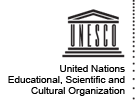Andean Animation
Animación Andina is a project to train young animators from Bolivia, Colombia, Ecuador, and Peru to produce animation media, primarily targeting children and youth, using the imagery, cultural values and traditional story telling of Andean cultures. Animación Andina will be proposed to public and private media sectors as an educational media tool that can be used in formal school education as well as through informal television viewing. The Andean region, like the rest of Latin America, has a treasure trove of cultural expressions in the plastic arts, as well as in music, literature and other forms of artistic expressions. In spite of these organic traditions, the region is often subject to imported, exogenous animation productions that do not reflect relevant local realities or cultural environments. Animación Andina seeks a more balanced flow of animation media in response to the existing geopolitical situation, contributing to the capacities of Andean animators who can incorporate their own artistic and cultural heritage into their work, culturally-relevant, educational animation content needed for the intellectual and social development of youth in the region. Animación Andina will contribute to the sustainability of animation-based media in the Andean region. The project serves as an excellent media platform not only for formal and non-formal education but also for critical campaigns on issues such as HIV/AIDS, protection of the environment, public health and civic education among many others. Furthermore the project has an inherent economic development aspect with the creation of jobs for young people in a labour intensive sector. The structure proposed, considering the development of training and production facilities in the Andean region, would be that of a network of media training centres holding short term training courses at the local, national and sub regional levels to concentrate resources while expanding its impact beyond national boundaries. Because the pilot project proposes economically viable animation productions with intrinsic social values, it is expected to gain the attention and interest of funders, as well as production centres, media training institutions, and public and private broadcasters. The request to IPDC, therefore, has a double operational objective: a) to assess the potential of sub regional cooperation with local authorities as well as professional, technical associations and media institutions; and b) to launch the first sub regional training and production workshop to show the value of the project and to get the support from other potential donors. The project aims to create a network of media training centres in the Andean region capable of providing high quality, computerassisted, animation production training to young media professionals and of co-producing and disseminating animation content with public and private broadcasters in the region.
